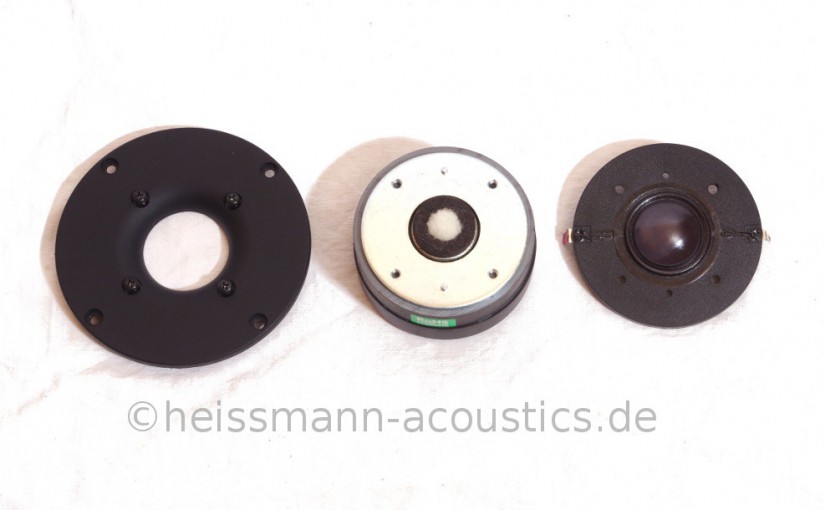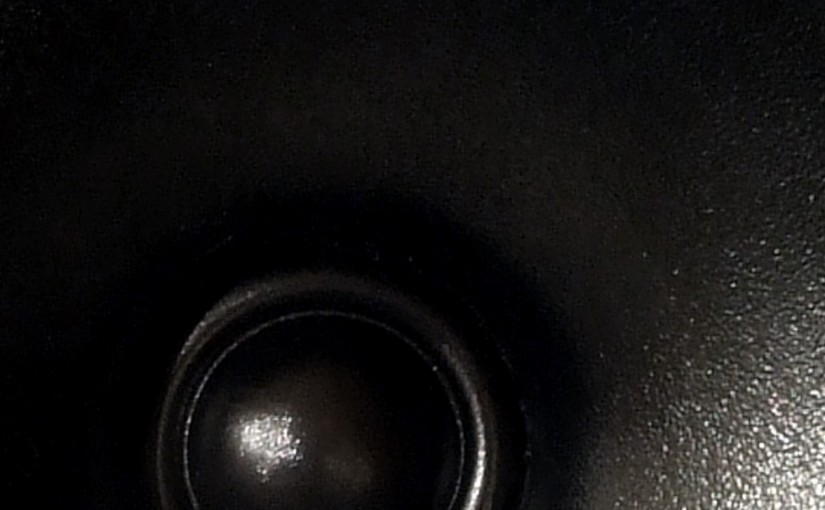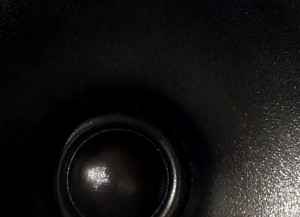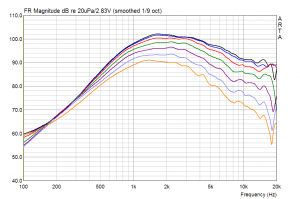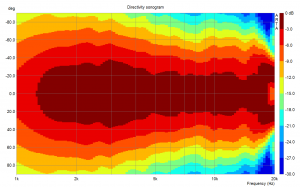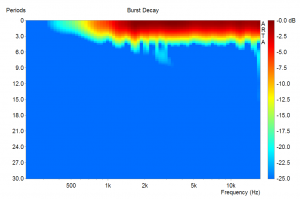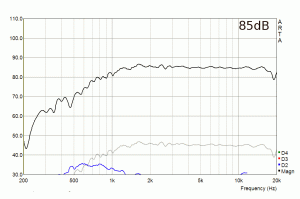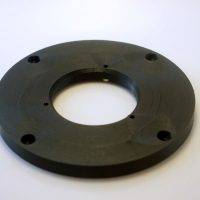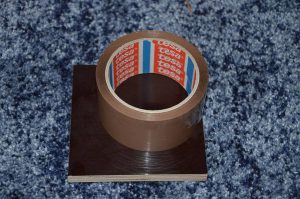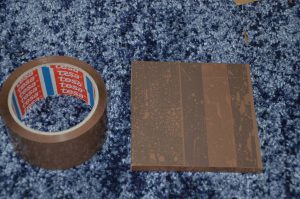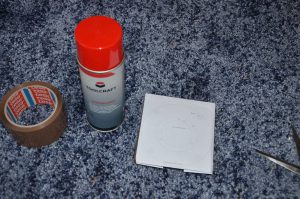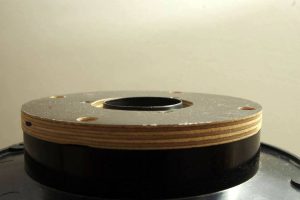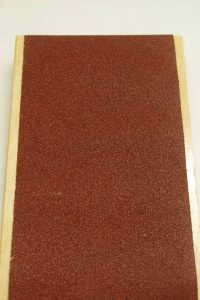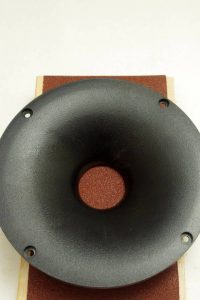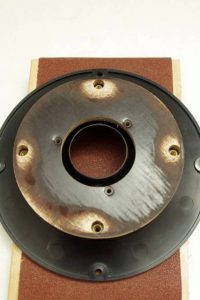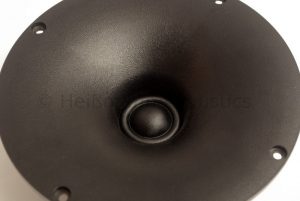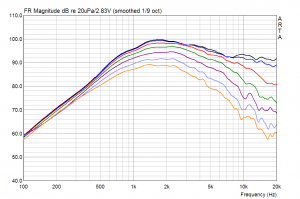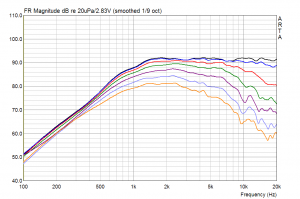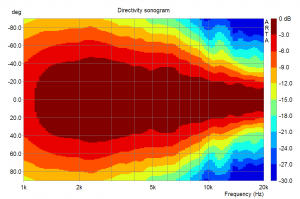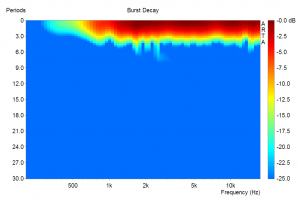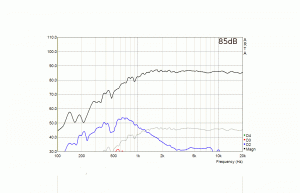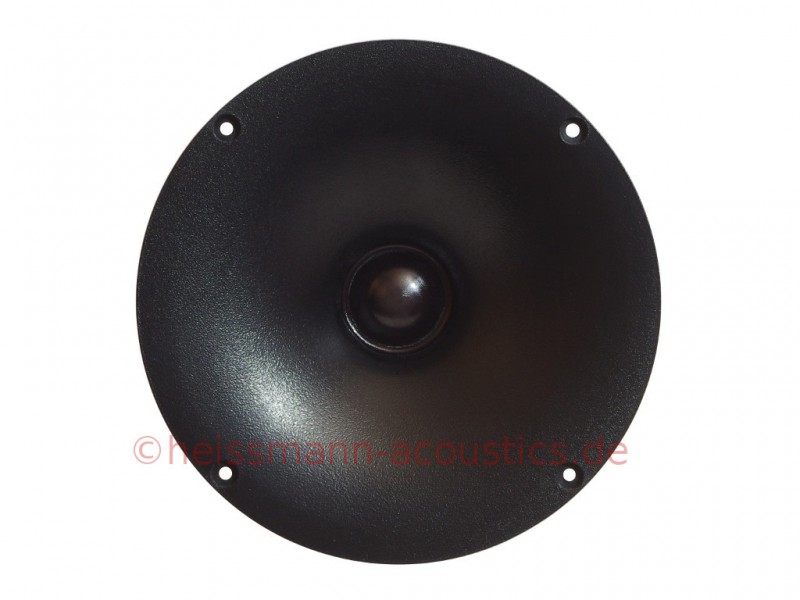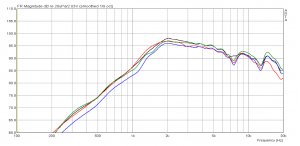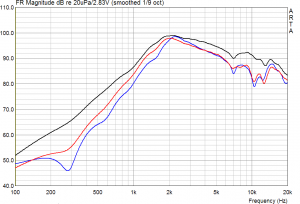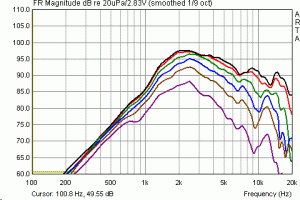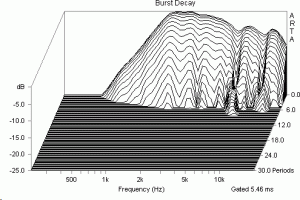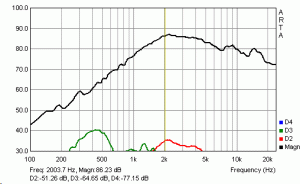A customer request, whether in the sound and sound 06 / 14 (kit MonaLisa, developer Ronald Waßen) presented modification of the tweeter DT-300 synonymous in the Cinetor meaningful, I took the opportunity to perform this.
In the modification, the ferrofluid is removed, introduced into the Polkernbohrung insulation wool and glued a felt ring on the pole plate. A detailed guide can be found in the Sound and sound forum.
The metrological results
All measurements were made with Waveguide, in 20cm narrow baffle.
frequency response
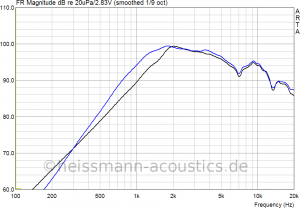 Significantly extended frequency response towards lower frequencies. Minimal higher efficiency, otherwise practically congruent course.
Significantly extended frequency response towards lower frequencies. Minimal higher efficiency, otherwise practically congruent course.
impedance response
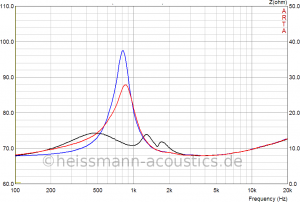 Significant influence of the modification on the impedance response. Clean and symmetrical impedance peak at 800Hz (blue). Compared to before (black), with a clearly flattened course and 3 impedance bumps (some DT-300 only show one double bump). In order to achieve a really clean and symmetrical impedance peak after the ferrofluid has been removed, the pole core hole must be tightly stuffed with insulating wool. The pole core hole was effectively closed acoustically by a 14x3cm long strip (blue). Compared to this (red) a little less stuffed, with a 7x3cm strip. The "new" impedance response allows significantly deeper separations, so the distortion measurements should not prevent this ...
Significant influence of the modification on the impedance response. Clean and symmetrical impedance peak at 800Hz (blue). Compared to before (black), with a clearly flattened course and 3 impedance bumps (some DT-300 only show one double bump). In order to achieve a really clean and symmetrical impedance peak after the ferrofluid has been removed, the pole core hole must be tightly stuffed with insulating wool. The pole core hole was effectively closed acoustically by a 14x3cm long strip (blue). Compared to this (red) a little less stuffed, with a 7x3cm strip. The "new" impedance response allows significantly deeper separations, so the distortion measurements should not prevent this ...
Harmonic distortions
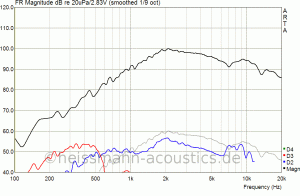 ... and you don't. No increased harmonic distortion. K2 between 800Hz and 2kHz is even slightly lower. Separations around 1,5kHz, possibly even deeper, should now be feasible!
... and you don't. No increased harmonic distortion. K2 between 800Hz and 2kHz is even slightly lower. Separations around 1,5kHz, possibly even deeper, should now be feasible!
Burst decay
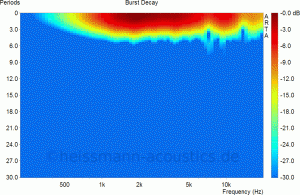 Slightly improved decay behavior around 7, - and 13kHz.
Slightly improved decay behavior around 7, - and 13kHz.
Meaningfulness of the modification of existing systems
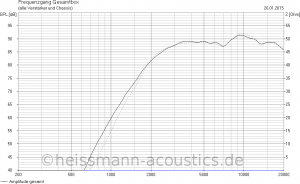 The example shows a separation of 2kHz with 18dB / oct. Dashed without, solid with modification. The frequency response in the working range shows slight deviations, but the slope changes towards the mid-bass, which can have a negative effect on the overall system. It is therefore not possible at this point to give a blanket "approval" for the modification of existing systems.
The example shows a separation of 2kHz with 18dB / oct. Dashed without, solid with modification. The frequency response in the working range shows slight deviations, but the slope changes towards the mid-bass, which can have a negative effect on the overall system. It is therefore not possible at this point to give a blanket "approval" for the modification of existing systems.
And finally ...
The modified DT-300 is the better DT-300. Significantly more beautiful impedance, more separable, more even decay, and minimally balanced in super high tone. Negative effects could not be determined.
Finally:
The modification should not be done without control measurements. A simple impedance measurement, which can be realized with the free version of LIMP (part of the ARTA Family) and a material usage of 1-2 €, is completely sufficient.
Reasons:
It should be ensured that the voice coil is still well centered after the modification. There are a few factors that influence it.
- She was not there before
- The tightening torque of the screws
- Possible game in the forced centering
- The positive centering allows two mounting positions, which can lead to different results
Ferrofluid can compensate for small errors in the centering of the voice coil. It could happen that one, just before the modification just enough central voice coil, grinds or hangs after the mod at the air gap.

